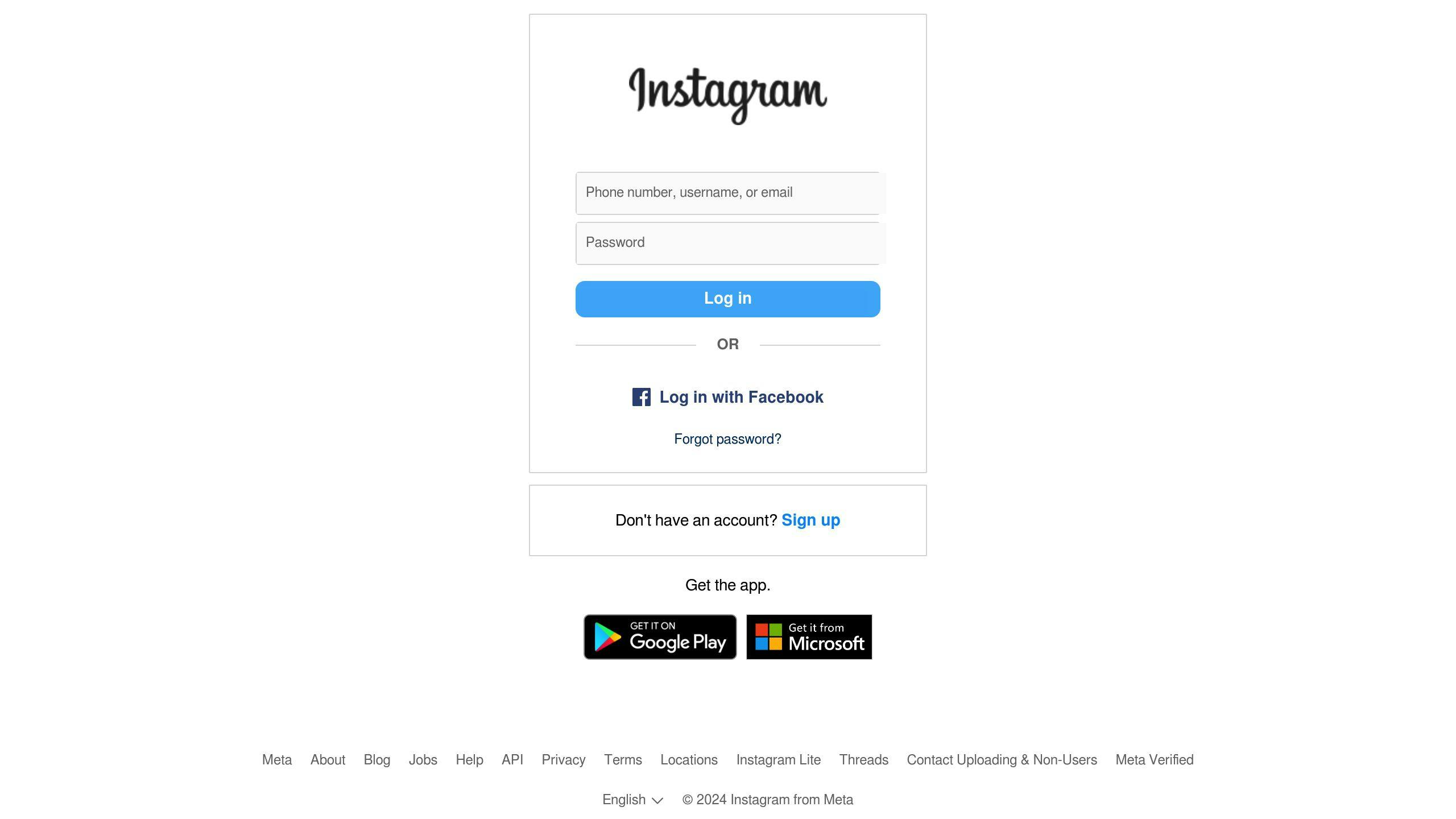Making money as a content creator involves a mix of direct and indirect methods, from advertising and sponsorships to selling products and online courses. This guide breaks down the various ways creators can earn income, highlighting platform-specific strategies for YouTube, Instagram, Facebook, TikTok, and others. It also addresses key considerations like platform policies, market saturation, and financial management, offering insights into future trends like new platforms, immersive technologies, and artificial intelligence. Whether you're just starting out or looking to diversify your revenue streams, here's what you need to know:
- Direct Monetization Methods: Including advertising, sponsorships, selling products, subscriptions, and affiliate marketing.
- Indirect Monetization Methods: Such as consulting, online courses, speaking engagements, and digital products.
- Platform-Specific Strategies: Tailored approaches for YouTube, Instagram, Facebook, TikTok, Twitch, Snapchat, and Patreon.
- Maximizing Revenue Streams: Tips on diversification, engagement, and balancing quality versus quantity.
- Challenges and Considerations: Navigating platform policies, standing out in a saturated market, and managing finances.
- Future Trends and Opportunities: New platforms, immersive technologies, and artificial intelligence offer new avenues for creativity and income.
By understanding these aspects, creators can better navigate the digital landscape, grow their audience, and increase their earning potential.
Chapter 1: Understanding the Content Creator Ecosystem
Content Creators vs. Influencers
Let's talk about the difference between content creators and influencers, and how they sometimes do the same thing.
Content creators are the people who make stuff online that you like to watch or read, like YouTube videos, blogs, podcasts, and social media posts. They want to share their ideas or hobbies and build a group of people who enjoy their content.
Influencers are a bit different because their main job is to get you interested in buying products or trying out services they talk about. They want to make you take action, like purchasing something they suggest.
But, here's the thing: a lot of the time, content creators and influencers do a bit of both:
- Many content creators will talk about products or services to make some money off their content.
- A lot of influencers also make interesting and fun content to keep their followers engaged and to build their own brand.
- Influencers often need to be good at making content to promote things effectively.
So, in simple terms:
- Content creators → make cool stuff
- Influencers → help sell stuff
- But many do a bit of both
Nowadays, making content and influencing people to buy things are getting more mixed together. This means a lot of people are making their living online by creating content and using it to advertise, get sponsorships, do affiliate marketing, and more.
As the lines between making content and influencing get blurry, both roles are becoming important for connecting with people online and making money from that connection.
Chapter 2: The Many Paths to Monetization
Direct Monetization Methods
Creators can earn money directly from their work in several ways:
- Advertising: If you make videos on YouTube, you can get money from ads that show up in your videos. The more people watch and engage with your videos, the more money you can earn.
- Sponsorships: Sometimes, companies will pay you to talk about their products in your content. This can be a set amount of money or free products in exchange for showing their brand in a good light.
- Products: You can make and sell your own stuff, like t-shirts, online classes, ebooks, or designs. This way, you keep all the money you make.
- Subscriptions: Using sites like Patreon, you can offer special content or perks to people who pay a monthly fee. This gives you a steady income.
- Affiliate Marketing: By promoting products from other companies with special links, you can earn a commission. This means you can make money without having to create your own products.
Indirect Monetization Methods
There are also ways to make money indirectly through your audience:
-
Consulting/Coaching: You can offer advice or coaching sessions for a fee.
-
Online Courses: You can create detailed online classes to teach something you're good at. Websites like Udemy and Skillshare are places you can sell these courses.
-
Speaking Engagements: You can get paid to speak at conferences or lead workshops.
-
Digital Products: Selling things like ebooks, courses, or designs can bring in money repeatedly since you can sell them many times.
Comparison Table: Direct vs. Indirect Monetization
| Revenue Stream | Revenue Potential | Time Investment | Scalability |
|---|---|---|---|
| Advertising | Medium | Low | High |
| Sponsorships | High | Medium | Medium |
| Products | High | High | Low |
| Subscriptions | Medium/High | Medium | Medium |
| Affiliate Marketing | Low/Medium | Low | High |
| Consulting/Coaching | High | High | Low |
| Online Courses | Medium/High | Medium/High | High |
| Speaking Engagements | Low/Medium | Medium | Low |
| Digital Products | Medium/High | Medium/High | High |
Direct ways to make money can reach more people, while indirect ways might make more money per effort but need more time. Using both methods can help creators earn more overall.
Chapter 3: Platform-Specific Strategies
YouTube
YouTube lets creators make money in a few ways:
- YouTube Partner Program: If you meet the requirements, you can make money from ads on your videos. The more people watch, the more money you can make.
- Super Chat: During live streams, viewers can pay to highlight their comments. YouTube keeps 30% and you get the rest.
- Channel Memberships: Viewers pay monthly for special perks like emojis and extra content. YouTube takes 30% and you get the rest.
Instagram and Facebook

Instagram and Facebook have ways for creators to earn money:
- Creator Funds: These platforms pay creators for making good content, based on how many people watch and like it.
- Branded Content: You can work with brands to make sponsored posts. How much you get paid depends on how many followers you have and what you're posting about.
- Subscriptions: Fans can pay monthly for special content. The platform takes a cut, and you get the rest.
TikTok
TikTok has its own ways for creators to earn money:
- TikTok Creator Fund: You get paid for your videos based on how many people watch and engage with them. The exact amount can change.
- Live Gifts: Viewers can buy and send virtual gifts during live streams. TikTok takes a part of this, and the creator gets the rest.
- Affiliate Programs: You can share product links and earn a commission when someone buys through your link.
Others
Other platforms also let creators make money:
- Twitch: Earn money through subscriptions, virtual goods, and donations while streaming games.
- Snapchat: The Snapchat Spotlight program pays for popular content.
- Patreon: Fans pay a monthly fee for exclusive content. Patreon takes a fee of 5-12%.
To make money directly from these platforms, you need to have people who watch and like your content, focusing on what you're best at.
Chapter 4: Maximizing Revenue Streams
Diversification
It's smart to have more than one way to make money if you're a creator. If you only rely on one thing, like ads on your videos or selling a single product, you might run into trouble if something changes, like the rules of the platform you're using or what your followers like. It's like not wanting to put all your eggs in one basket.
Here are some ideas to mix it up:
- Share your stuff on different places like YouTube, Instagram, and TikTok.
- Try different ways to make money. For example, besides ads, think about selling t-shirts or ebooks.
- Get an email list going so you can sell directly to your biggest fans.
By spreading out where and how you make money, you can help keep your income steady even if one part isn't doing so well.
Try to keep 3-5 different money-making activities going at the same time.
Engagement
Getting your followers to really get into your content is super important. The more they watch, like, talk about, and share what you make, the more chances you have to make money.
Here are some ways to get more engagement:
- Answer comments - it shows you're paying attention.
- Ask questions in your posts to start conversations.
- Work with other creators to get in front of new people.
- Go live to talk to your followers in real-time.
- Have contests or giveaways - they're fun and get people excited.
Keep an eye on how many people are watching and talking about your content. It helps you see what's working so you can do more of it.
When lots of people are into your content, platforms will show it to even more people.
Quality vs. Quantity
You might think making a ton of content is the way to go, but if it's not good, it could backfire.
Here's how to focus on quality:
- It's okay to make fewer things if they're better.
- Take your time editing to make everything look and sound great.
- Really dig into topics that people care about.
- Ask your followers what they like.
You still need to put stuff out regularly, but don't let the quality drop just to have more out there.
As you get better at making content, you might find you can do more without cutting corners. But don't push too hard too fast.
sbb-itb-bc761f5
Chapter 5: Challenges and Considerations
Platform Policies
As a creator, you need to know the rules of each platform you use. There are rules about what kind of content you can post, how to tell people about paid partnerships, and more.
- Make sure to read the rules and guidelines for each platform. This will help you understand what's allowed and what's not.
- If you don't follow the rules, you might get a warning, temporarily lose the ability to make money, or even get kicked off the platform.
- Always be clear when you're showing a sponsored product. Hiding this information is against the rules.
Keep an eye out for any changes in the rules and adjust your content accordingly.
Market Saturation
There are a lot of creators out there, so standing out can be tough. You'll need to find creative ways to grab people's attention.
- Look at what's popular and think about how you can offer something different.
- Use the right hashtags to help people find your content.
- Team up with other creators to reach more people.
- Try out new features like YouTube Shorts to see if they help your content stand out.
- Check your analytics to see what your audience likes the most.
Keep looking for new ways to get noticed as things change.
Financial Management
When your income changes a lot, it's important to manage your money carefully:
- Save up an emergency fund to cover 3-6 months of expenses, just in case.
- Have different ways to make money so if one slows down, you're not in trouble.
- Spend some of your earnings on better equipment or software to improve your content.
- Keep track of your taxes to avoid any surprises.
- Consider getting advice from a financial planner who knows about the creator industry.
Plan your finances well to stay stable through the ups and downs.
Chapter 6: Future Trends and Opportunities
The world of sharing stuff online and making money from it is always changing. Here are some new things happening that could help creators like you:
New Platforms
New places to share your work pop up all the time:
- TikTok is super popular for its short videos. It's a great place to show off your creativity, use cool tools, and even make some money.
- Twitch is the go-to for live streaming, especially for gamers. But it's also good for just chatting with your audience.
- Twitter Spaces lets you have live audio chats with people, and you might get tips from listeners.
There are also new apps like Lens, Clapper, and Poparazzi where you can try different ways to connect with people.
Immersive Technologies
New tech like augmented reality (AR), virtual reality (VR), and mixed reality is making online experiences more real:
-
You can go to concerts, learn things, or work together in VR spaces.
-
AR shopping lets you see how products look in your space before you buy them.
-
Hybrid events mix real-life and online experiences, making things more interesting.
These cool techs are opening up new ways to be creative and make money.
Artificial Intelligence
AI is changing how we make and enjoy content:
-
Synthetic media, like deepfakes, lets you put people into videos. It's a bit tricky but can be creative.
-
AI-generated content can help you make stuff faster, like writing, pictures, or videos. Just make sure it's still good quality.
-
AI can also help suggest what people might like to watch and give you useful info to do better.
Using AI smartly and being clear about it is important.
The future is full of new chances to grow your audience and make money. By being creative and responsible with these new tools and platforms, there's a lot you can do.
Conclusion
We've looked at many ways content creators can make money online. You can earn by showing ads, selling your own stuff, working with brands, or giving special content to your fans. Making money this way lets you do what you love for a living.
But remember, as you make more money and get more followers, stay true to yourself. Always be honest about when you're paid to promote something. This keeps your followers' trust.
It's important to be smart with your money. Save for tough times, try different ways to make money, and spend some on making your content better. Knowing how to handle money in this job is key.
Being a creator today is exciting. You get to make money doing what you love and connect with people all over the world. But be careful not to let chasing money hurt your values or mental health.
Think about what success means to you, not just in likes and views, but in real connections, growing your skills, and making a difference. If you stick to what you believe in, the money will come.
Frequently Asked Questions
What skills do I need to become a content creator?
If you want to be good at making stuff online, you need a mix of skills. Here are some important ones:
- Storytelling: You should be able to think of cool ideas and share stories that grab people’s attention.
- Content creation: You need to know how to make different kinds of stuff like videos, pictures, drawings, or written posts. Being a bit artistic helps.
- Video and audio editing: A lot of creators edit their own videos or podcasts. This means you have to learn how to use editing programs.
- Social media marketing: You should understand how to make your content popular on social media. Knowing a bit about taking good photos or making videos is useful too.
- Time management: Making good content regularly takes a lot of work. You’ll need to plan, create, edit, and talk to your audience all at the same time.
- Business skills: As more people follow you, you’ll need to know about things like taxes and selling products.
Many creators learn as they go, but you can also take online classes or get help to get better. Always be ready to pick up new skills.
How do I choose a niche or topic to focus on?
Finding the right niche can be tricky, but here’s some advice:
-
Choose a passion: If there’s something you really love, share it. Your excitement will show.
-
Assess your skills: Think about what you’re good at and enjoy making content about.
-
Research popular niches: Look at what’s trending and see if there’s a lot of interest.
-
Find gaps: Check if there’s something missing in popular topics that you can do better.
-
Think local: Sometimes, focusing on your own area or language can make you stand out.
Start with one or two areas and see what your audience likes. Let their feedback guide you.
How much money can I realistically make?
How much you can earn varies a lot:
- Many people who do this full-time earn between $50k to $100k a year.
- The top creators might make $250k to more than $1 million a year.
But starting out, aim for something more doable:
- Expect about $500 to $2000 per month in the beginning.
- After a year or two, you might earn $2000 to $5000 per month.
To make more money:
- Try different ways to earn - like ads, working with brands, selling stuff, or getting tips. Don’t just stick to one.
- Keep making and sharing content regularly. It takes time to see results.
- Focus on giving your audience useful or fun content and build a real connection with them.
Earning a living from this isn’t easy, but with hard work, patience, and smart choices, it’s possible.
Related Questions
How do you get paid as a creator?
Creators have a few ways to make money from what they do:
- Brand sponsorships: Companies pay creators to show or talk about their products. How much you get paid usually depends on how many people follow and interact with you.
- Affiliate marketing: Creators can make money by sharing special links to products. If someone buys something using their link, the creator gets a part of the sale.
- Ad revenue from platforms like YouTube and Facebook: Creators earn money from ads that are shown with their videos or posts. The more people watch and like the content, the more money they can make.
- Selling merchandise: Creators can also make and sell their own items, like shirts or stickers, to their fans.
- Memberships/Subscriptions: On sites like Patreon, fans can pay every month to get special content or perks.
- Tips: On some platforms, like Twitch, viewers can send money directly to creators during live streams.
How are content creators so rich?
Some top creators make a lot of money from working with brands and from ads. If a creator has a lot of followers, they might get paid a lot of money for just one post promoting a product. They can have many deals like this at the same time, which makes their income grow fast. Having a big and active group of followers on social media makes it easier for creators to make money.
How much can a creator make?
Creators' earnings can vary a lot:
- Top earners: Over $128,000 a year
- 75th percentile: $128,000 a year
- Average yearly income: $116,615
- 25th percentile: $123,000 a year
The very successful creators on YouTube and social media can make more than $1 million a year. But when you're just starting, you might make between $500 to $2,000 a month. With time and consistency, this could increase to $2,000 to $5,000 a month.
Who pays content creators?
Creators get paid by the platforms they use through programs that share ad revenue, like YouTube's Partner Program or TikTok's Creator Fund.
Companies also pay creators directly for brand sponsorships. A survey found that YouTube is the main way creators making over $200,000 a year earn their income. But Instagram and TikTok are also great for making money through sponsored posts at all levels.
Creators can also earn money directly from their fans through subscriptions on Patreon, tips on Twitch, and by selling their own merchandise.



